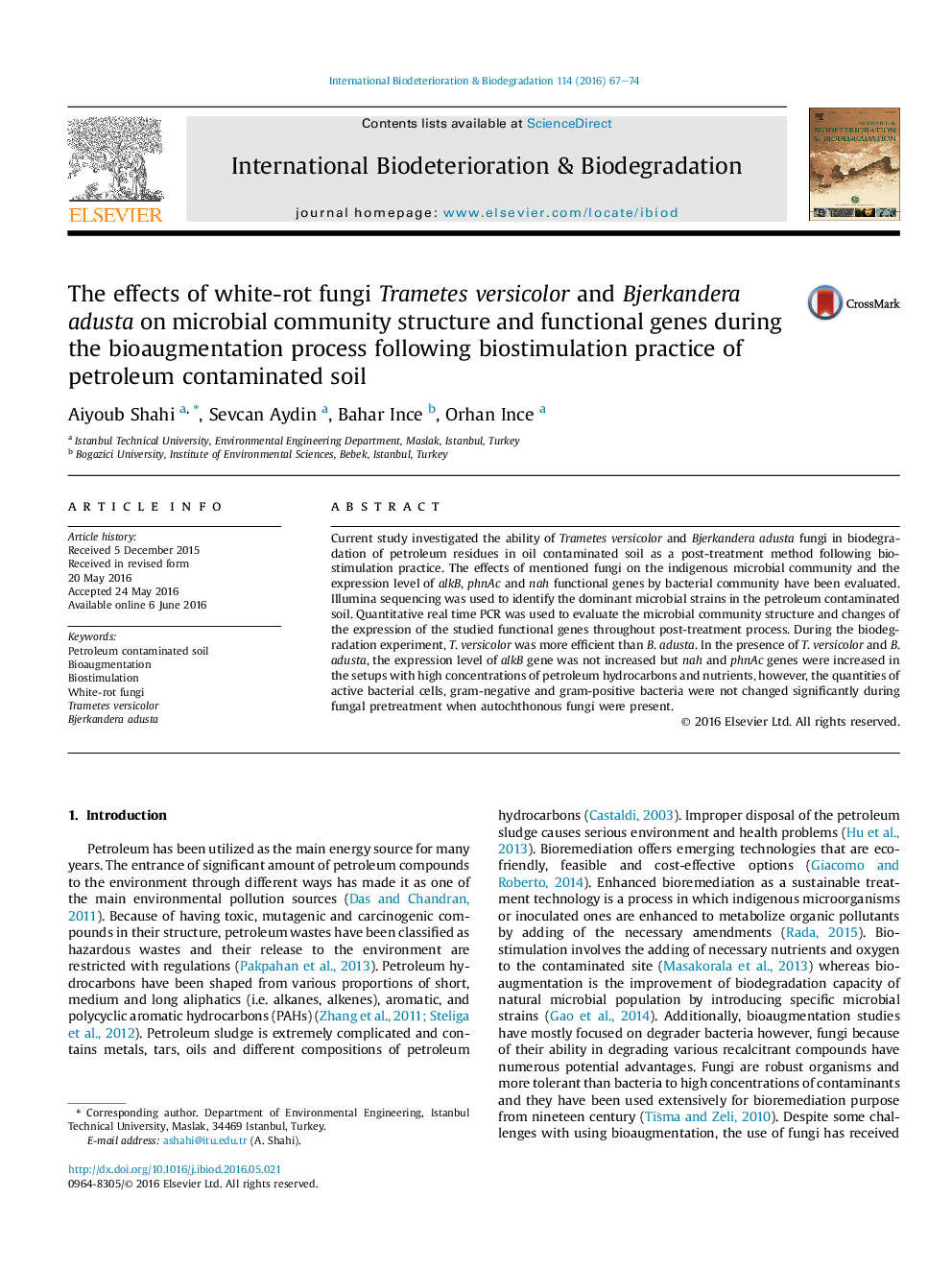| Article ID | Journal | Published Year | Pages | File Type |
|---|---|---|---|---|
| 4364125 | International Biodeterioration & Biodegradation | 2016 | 8 Pages |
•T. versicolor and B. adusta fungi cannot fully biodegrade the petroleum residues.•T. versicolor is effective than B. adusta in biodegradation of the petroleum residues.•The expression of nah and phnAc genes was increased in presence of the studied fungi.•The amount of active, gram-negative and gram-positive bacteria was not changed.
Current study investigated the ability of Trametes versicolor and Bjerkandera adusta fungi in biodegradation of petroleum residues in oil contaminated soil as a post-treatment method following biostimulation practice. The effects of mentioned fungi on the indigenous microbial community and the expression level of alkB, phnAc and nah functional genes by bacterial community have been evaluated. Illumina sequencing was used to identify the dominant microbial strains in the petroleum contaminated soil. Quantitative real time PCR was used to evaluate the microbial community structure and changes of the expression of the studied functional genes throughout post-treatment process. During the biodegradation experiment, T. versicolor was more efficient than B. adusta. In the presence of T. versicolor and B. adusta, the expression level of alkB gene was not increased but nah and phnAc genes were increased in the setups with high concentrations of petroleum hydrocarbons and nutrients, however, the quantities of active bacterial cells, gram-negative and gram-positive bacteria were not changed significantly during fungal pretreatment when autochthonous fungi were present.
Graphical abstractFigure optionsDownload full-size imageDownload as PowerPoint slide
